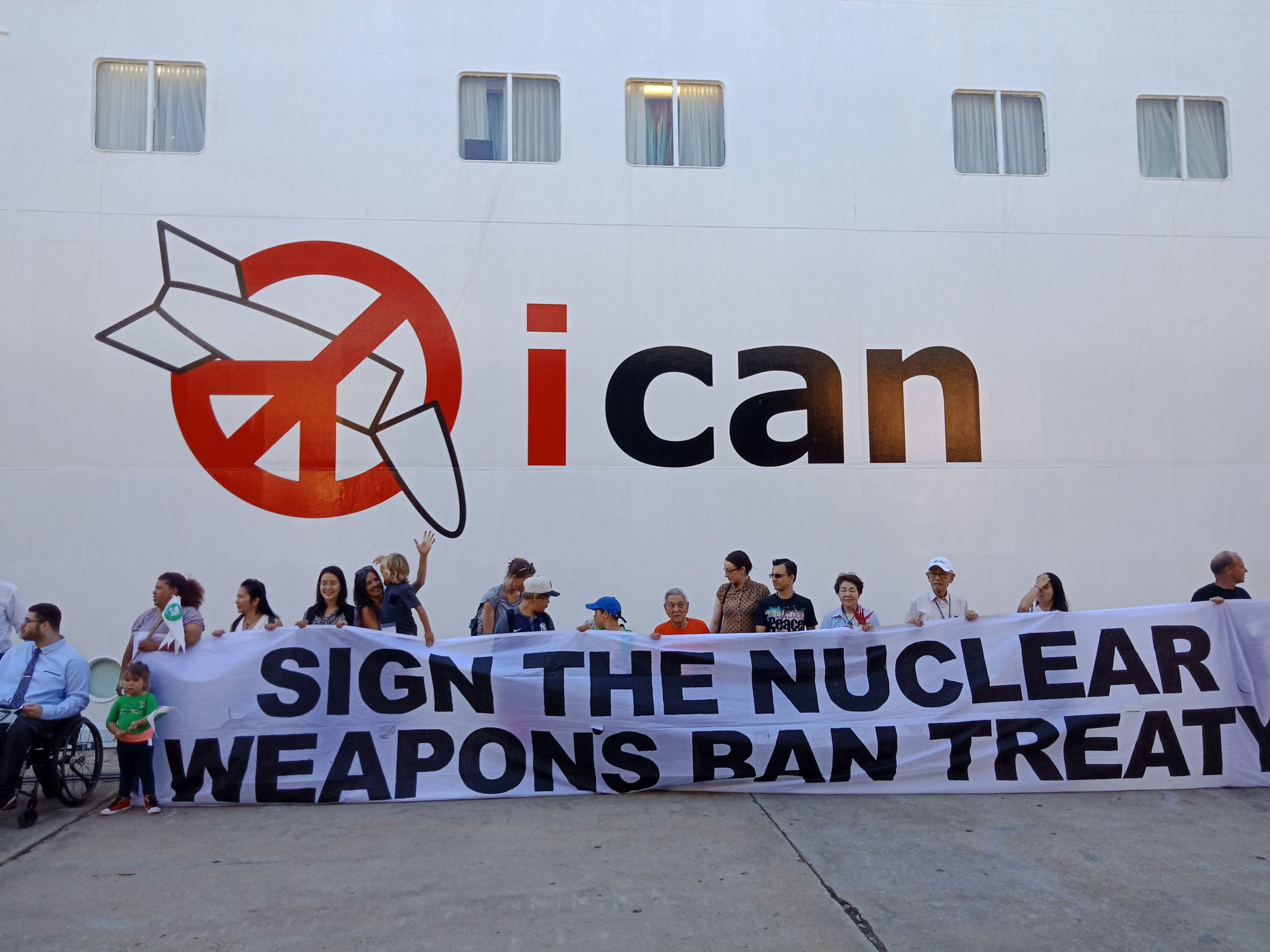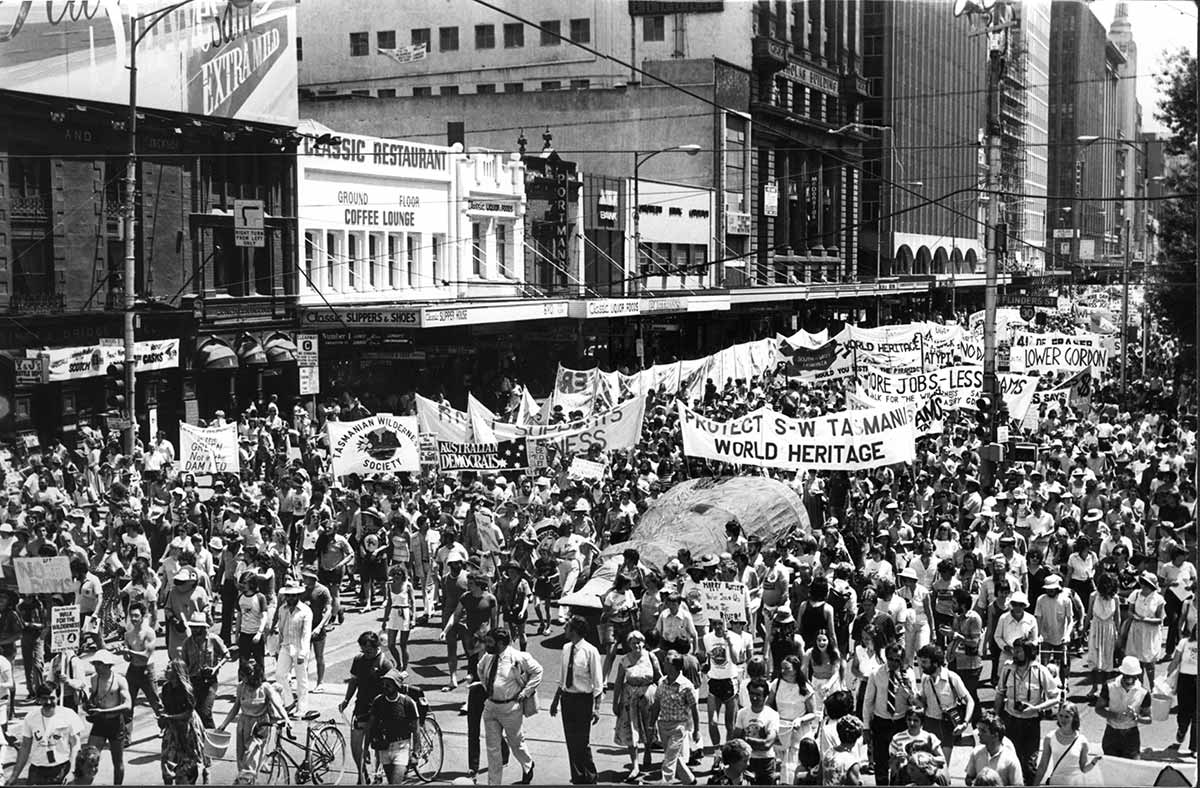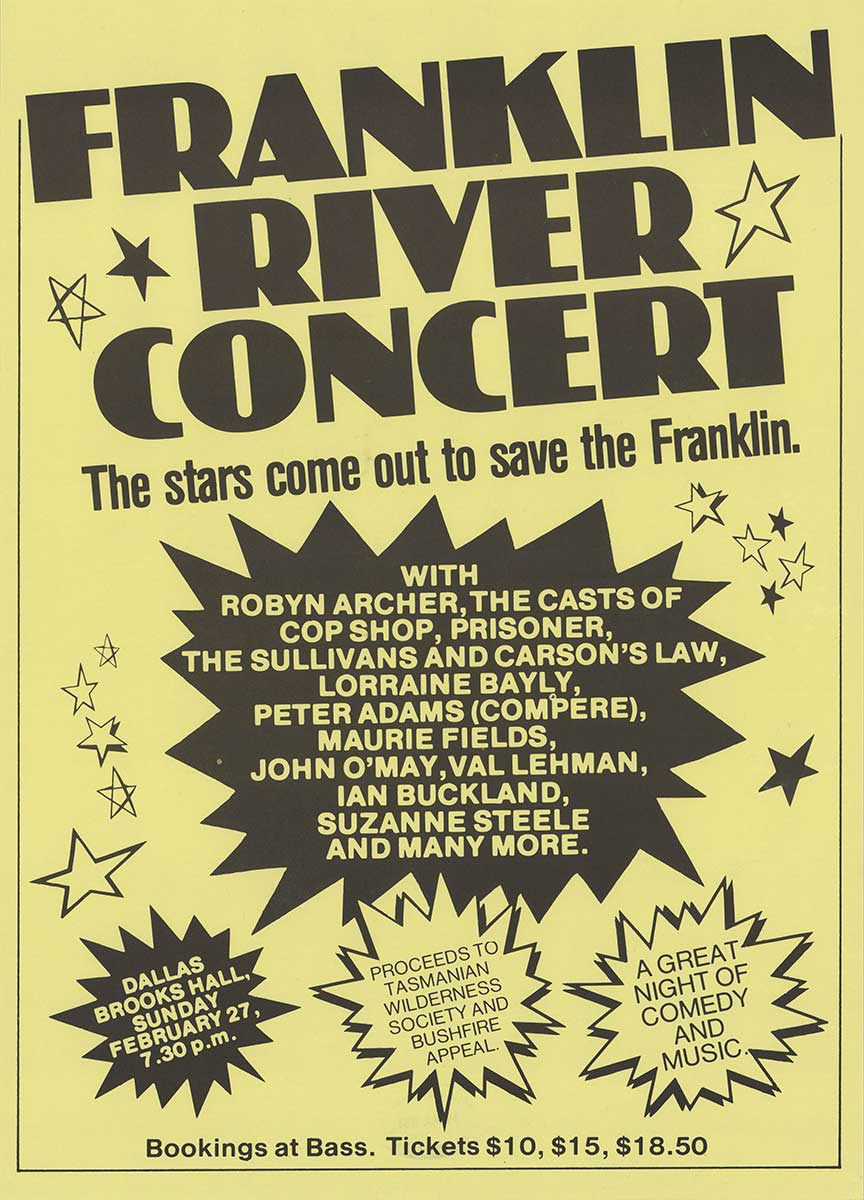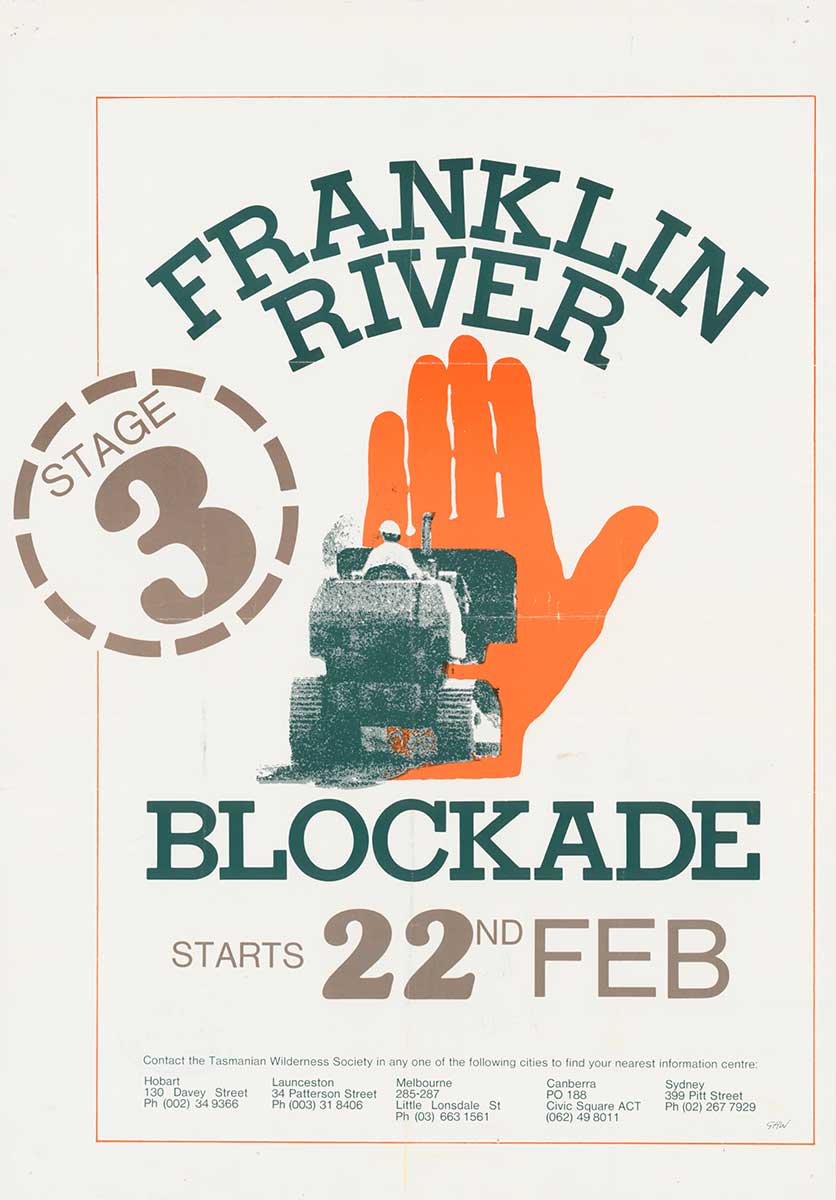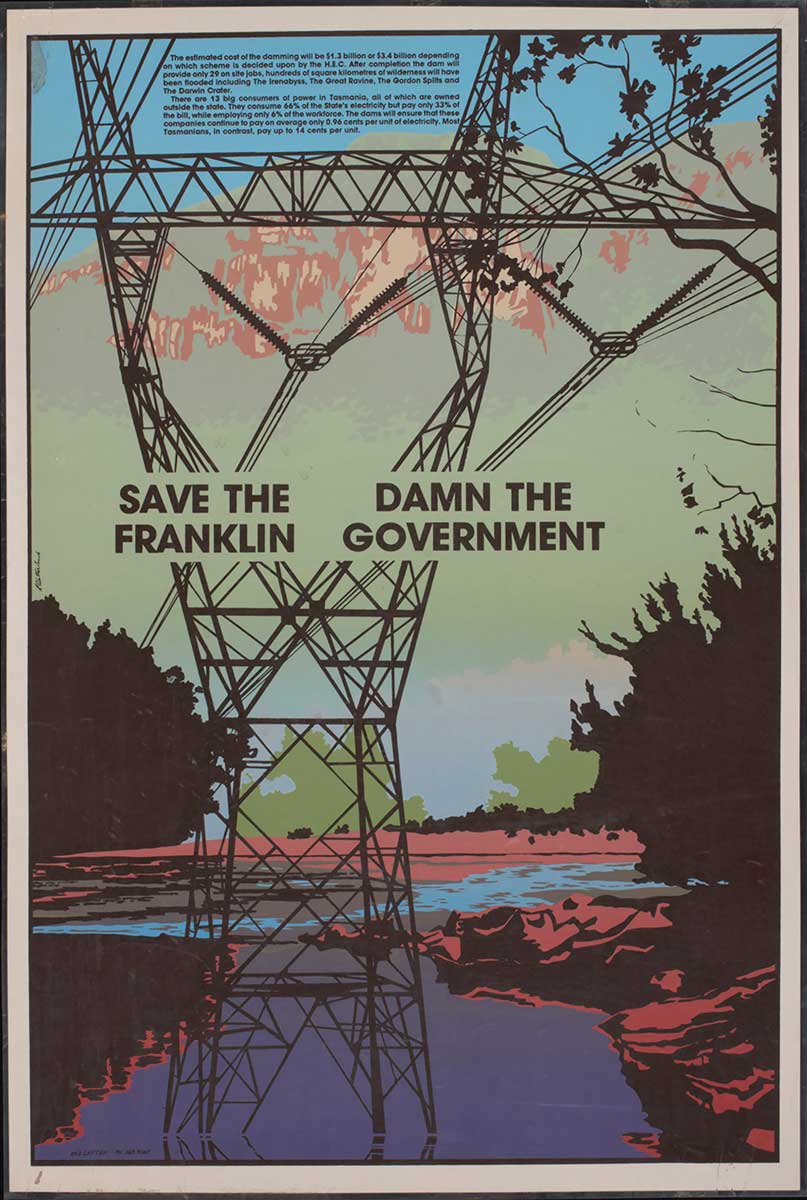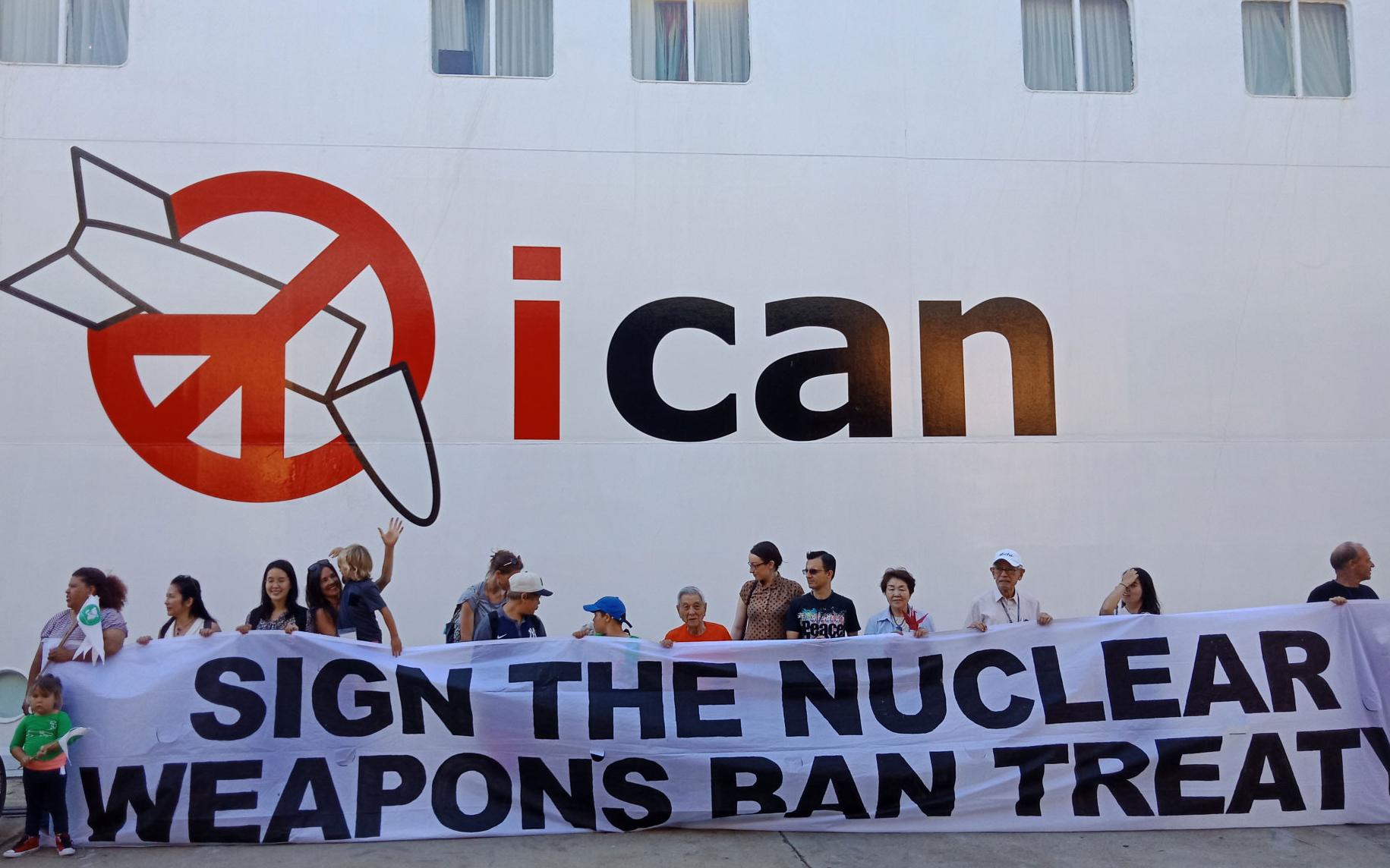Learning module:
Active participation Defining Moments
Investigation 1: How can you have an influence in society?
1.1 What happened with the Franklin Dam?
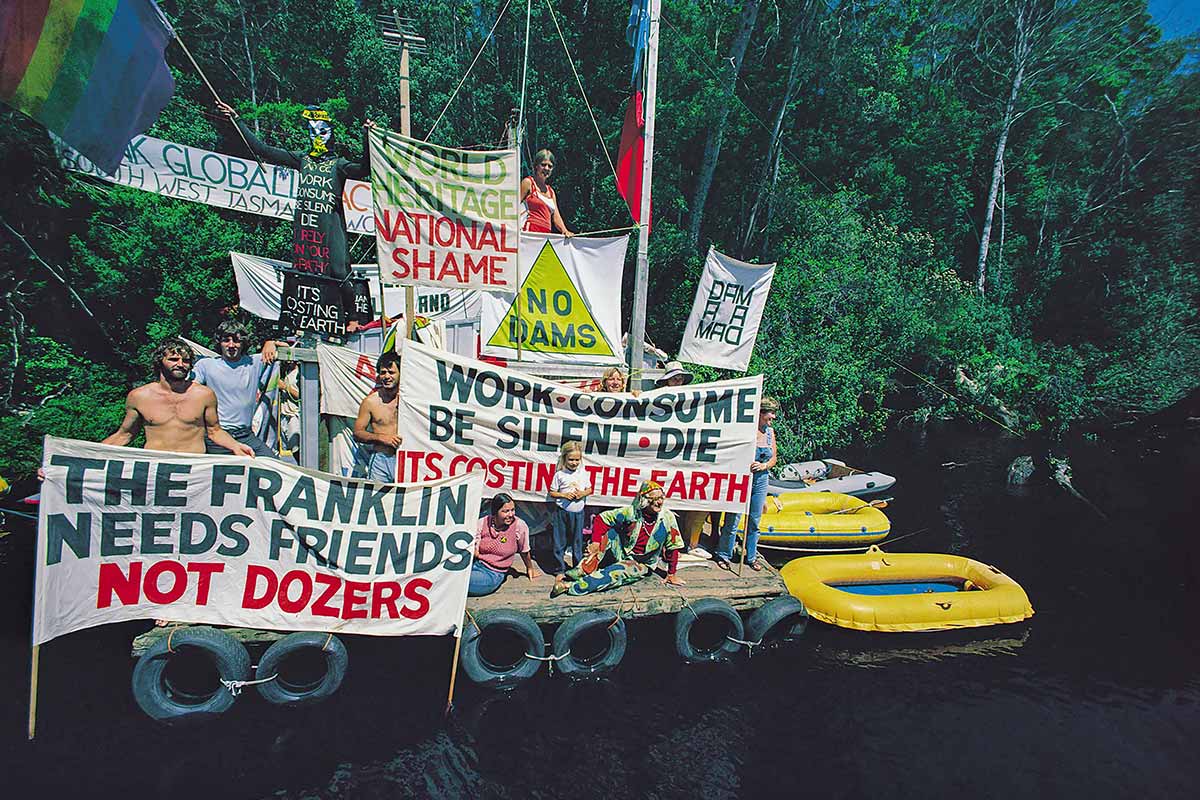
Imagine that there is a beautiful wilderness area of untouched nature. A large river flows through it.
There are few areas like it in the world. It is home to 3000-year-old trees, many endangered species, and caves with evidence of Aboriginal occupation dating back at least 20,000 years.
It is very hard to get to. Only a tiny minority of people will ever be able to visit it, but it creates some tourism, which helps the local area.
However it is in an area where a dam could be built and the water used to generate cheap, clean and renewable hydro-electricity.
The dam would supply electricity for new factories, providing more jobs for people. The extra electricity not needed locally could be sold to other states, providing them with cheap and green electricity and generating more income for Tasmania.
However the dam would flood much of the wilderness area, destroying the habitat of the endangered animals and flooding irreplaceable cultural sites.
So there is a conflict between keeping an area of wilderness and using that area to provide clean electricity, industrial development and jobs.
A controversy like this took place in Tasmania, in the 1970s and 1980s, over the Franklin Dam proposal.
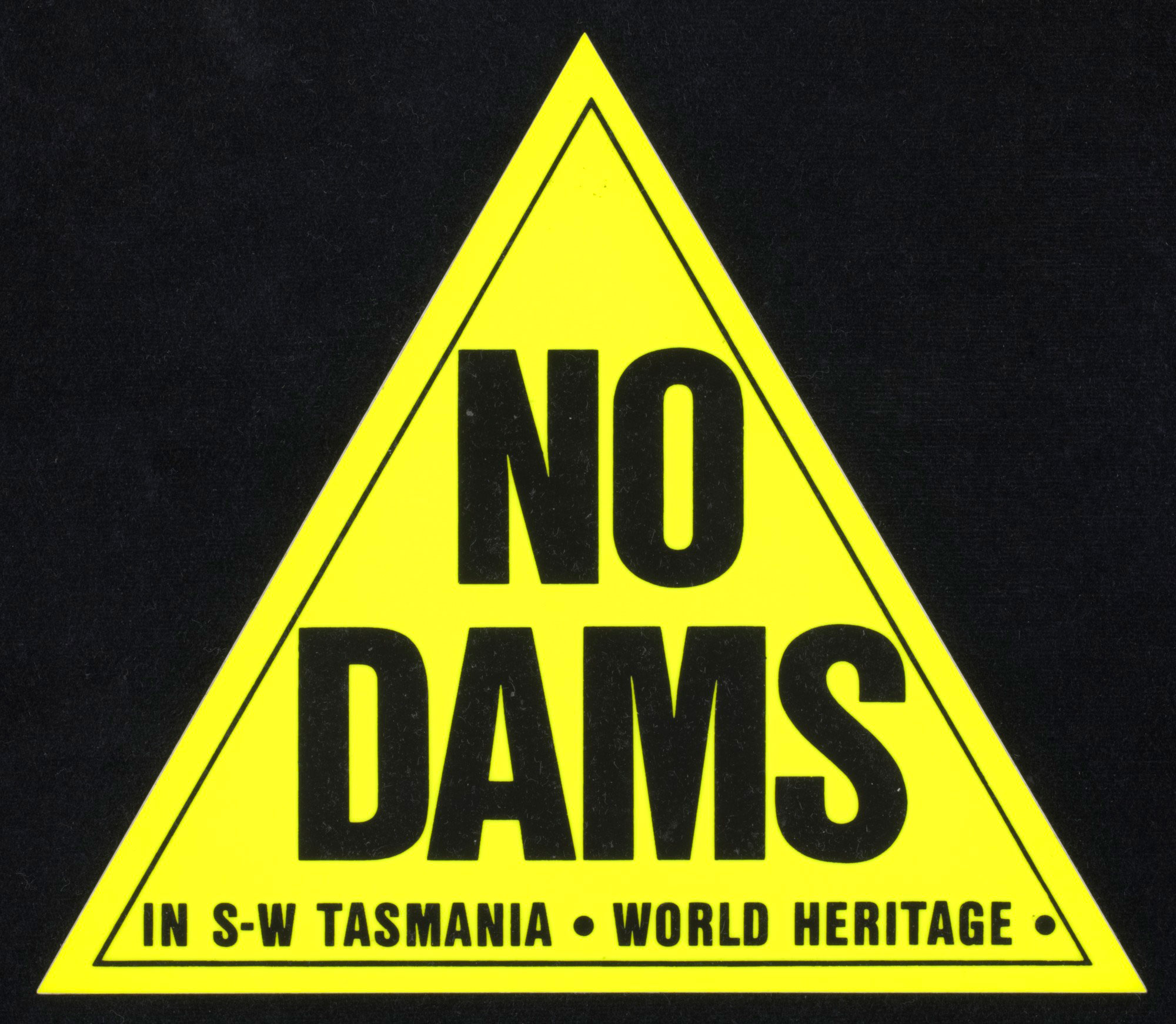
The Franklin Dam proposal
Hydro-electricity can be produced when there is a large body of water that can be released in a controlled way to power generators reliably and continuously.
There needs to be a dependable source of this water from large rivers in reliable rainfall areas, and a large area for the water to be held. When engineers create a dam to hold back the water and release it when electricity is needed, the area behind the dam wall floods.
The Tasmanian Hydro-Electric Commission proposed that a dam should be built near the junction of the Franklin and Gordon Rivers. The dam would have created a large reservoir that flooded and destroyed the surrounding wilderness area.
There were both supporters and opponents of the dam proposal. The issue created great division, and even violence in some instances.
In the end, after many years, the opponents of the dam won. The dam was not built.
How did this happen? And what aspects of active citizenship did the opponents use to achieve their aim?
1. Use Google Maps to locate the point where the Franklin River flows into the Gordon River.
Now watch the following video about the Franklin Dam protests and look at the images that follow. As you go through the material, try to identify the various methods the opponents of the dam used to stop it.
2. Look through the possible protest methods listed below. Which of them were employed by the Franklin Dam protestors, according to the evidence you have seen so far?
3. Which methods used by the Franklin Dam protestors do you think were most effective in blocking the building of the dam? Why?
4. Were there any methods that you think were less effective? Why?
Australian citizens can actively participate in democracy, within the bounds of the law. By doing so they are exercising their rights under the UN Universal Declaration of Human Rights. These rights include freedom of speech, association, assembly, religion and movement.
5. Which of these freedoms can you now identify as having been important in helping people protest successfully against the Franklin Dam?
6. Which of these freedoms do you think were the most important for the Franklin Dam campaign? Why?
7. From what you have studied, and through further research, give one example from the Franklin Dam protests of each of these ways in which people can participate in Australian democracy:
- contact with political representatives
- use of lobby groups who know how to influence decision makers
- use of the electoral system to vote for or against political representatives
- direct action.
8. As well as using legal methods of protest, many Franklin Dam protesters broke the law by blocking workers from coming onsite to start their work.
a) How would the protesters have justified their illegal actions?
b) How would people responsible for upholding the law counter these arguments?
9. If it is okay for one group to break the law for what they see as a good cause, can’t everyone justify breaking the law by saying it is for a good cause? Write a persuasive paragraph on this idea or hold a class debate about it.
Conclusion
The ABC published the following article in 2012, on the 30th anniversary of the Franklin Dam dispute:
Conservationists have marked the 30th anniversary of the Franklin Dam blockade, but the issue continues to divide opinion in Tasmania.
About 1400 people were arrested for trying to stop work on the hydro-electric dam project in the state’s south-west on the 14th of December 1982.
The former Greens leader Bob Brown said it was the biggest environmental protest in Australia’s history.
‘Between 20,000 and 25,000 people turned out to save the Franklin in Hobart,’ he said. The Commonwealth intervened and a High Court Ruling in 1983 backed the Hawke Government’s decision to kill the project.
The then-Premier, Liberal leader Robin Gray, still views it as a tragedy. He has described it as one of the worst political decisions ever made, and said if the dam had been built Tasmania would be better off today.
‘We would have had a lot more industry in the state, we would have had cheaper electricity and we would have had clean electricity,’ he said.
Almost 1400 people were arrested for their opposition to the hydro-electric dam project. Former Greens Senator Ian Cohen was involved in the blockade and remembers the international attention it attracted.
‘It was a massive effort and it was pioneering,’ he said.
‘It was a time where we were not so sure we were going to succeed and there was a lot of antagonism against us in the community and it was quite a revolutionary event in itself and I think that still reverberates until this day.’
About 70 people who were involved in the blockade have marked the milestone with a cruise up the Gordon River, on Tasmania's west coast.
The area has since been put on the World Heritage Register.
‘Franklin dam still controversial 30 years on’, Sydney Morning Herald, 15 December 2012
10. Why do you think people still disagree about whether or not the Franklin River should have been dammed?
Further research
To find out more go to the Defining Moment in Australian history: 1982 Fight for the Franklin — Franklin Dam protests






